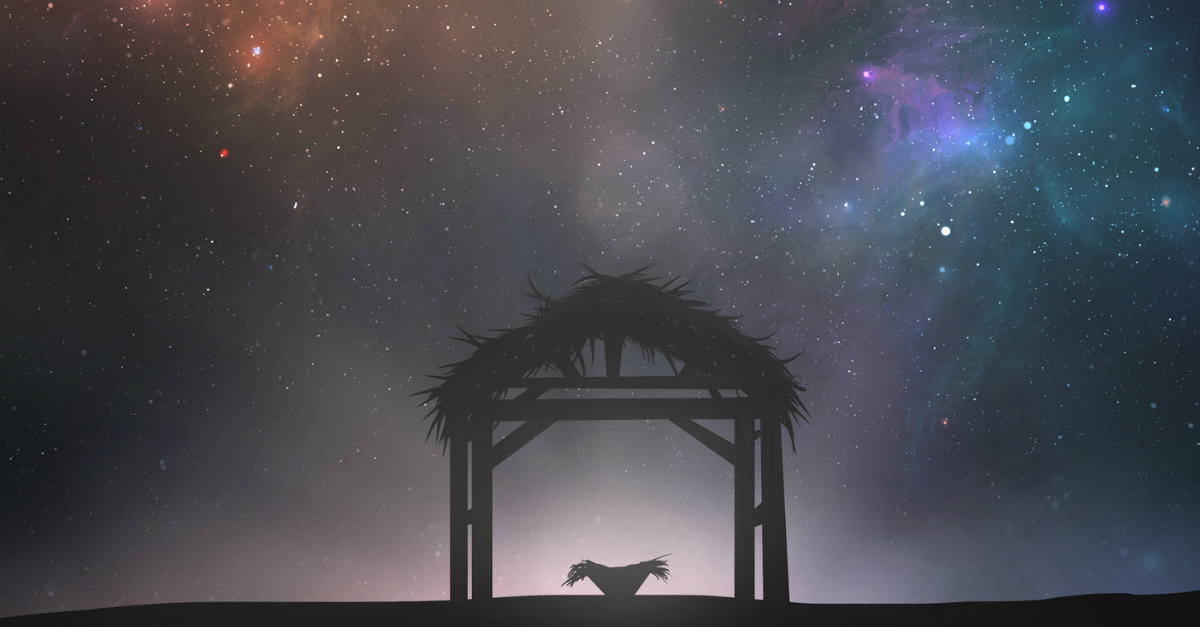When Is Christmas? 2023 Christmas Dates
In the modern era, Christmas Eve and Christmas Day occur on the same dates in the month of December. Christmas Eve is on December 24, with Christmas Day following on December 25. While the numbered dates remain the same, the days of the week for Christmas change from year to year.
Christmas Day - Monday, December 25, 2023
Advent 2023 will begin on Sunday, December 3rd, and ends on Sunday, December 24th.
The 12 Days of Christmas 2023 will begin on Monday, December 25, and end on Friday, January 5, 2023.
Future Dates
- 2024 - Wednesday, December 25th
- 2025 - Thursday, December 25th
- 2026 - Friday, December 25th
Explore more about the Christmas Holiday History:
- Why Is Christmas on December 25?
- When Did Christmas Begin?
- When was Jesus Born in the Bible?
- The Origin of Christmas Eve
- The History of Christmas
Why Is Christmas on December 25?
There are two particular theories for why we use the date of December 25 for Christmas.
First, people and religions of the day celebrated some sort of holiday around that time. From Jewish Chanukah to Pagan Winter Solstice to Germanic Yule to Roman Dies Natalis Solis Invicti (Birth of the Unconquered Sun); the sheer number of celebration days with trees, decorations, yule logs, mistletoe, and feasts seem to point to a season of celebration to which Christians added the birth of Jesus as a counter-cultural event and possibly even an escape from the pagan holidays for early believers.
December 25 was the Saturnalia Festival of emancipation, gift-giving, and the triumph of light after the longest night. The Christian sees the truth implicit in this pagan tradition that reflects "Christ the Light of the world, His triumph over the night of sin" in Luke 1:78-79,
"...Because of the tender mercy of our God, by which the rising sun will come to us from heaven to shine on those living in darkness and in the shadow of death, to guide our feet into the path of peace.”
The second theory centers around the date “accepted” by the Western Church of March 25 as the Annunciation or Immaculate Conception of Jesus in Mary’s womb. December 25 is nine months later and thus celebrated as the birthday of Jesus. Regardless of the possible reasons for the date, the church calendar was set in the West during Constantine’s reign, while the Eastern Church held onto the date of January 6 for some time.
Rejoice in the birth of Christ with a FREE 25 Days to a Joyful Christmas Prayer Guide!

When Did Christmas Begin?
Christmas is the annual Christian festival celebrating Christ's birth, held on December 25 in the Western Church. The traditional date of December 25 goes back as far as A.D. 273. Two pagan festivals honoring the sun were also celebrated on that day, and it is possible that December 25 was chosen to counteract the influence of paganism. Even now, some people feel uncomfortable with Christmas because they think it is somehow tainted by the pagan festivals held on that day. But Christians have long believed that the gospel not only transcends culture, it also transforms it. In A.D. 320, one theologian answered this criticism by noting, “We hold this day holy, not like the pagans because of the birth of the sun, but because of Him who made it.”
By the fourth century, many Christian groups had begun to observe Christ's birthday, though the day chosen for the celebration differed from place to place. Christians in the East generally celebrated on January 6; those in the West on December 25. Others set dates in March, April, or May. About 350 AD, Pope Julius set December 25 as the date of Jesus' birth. This corresponded with the Roman feast of Saturnalia, the festival of the Unconquered Sun. Since ancient days, people throughout the northern hemisphere celebrated when the daylight hours had reached their shortest and again began to increase. Temples were decorated with greenery and candles, and there were feasts and parades with special music, and gifts were given to family and friends. Among the British Druids, mistletoe was worshiped, and the Saxons used holly and ivy in their winter religious ceremonies. As Christianity spread throughout Europe, many of the pagan customs and festivities of the winter solstice were absorbed into celebrating the birth of Jesus.
The English Puritans and Reformed Protestants across Europe determined to purify religious belief and remove everything that was not directly commanded or described in the Bible. They believed the observance of Christmas on December 25 was pagan, taken from the Roman Catholic calendar. In 1644, the Puritans banned Christmas observance in England, but the ban was quickly rescinded when King Charles II took the throne. In America, however, the Puritans of New England continued to treat December 25 as just another day in winter well into the 1800s. By the 1830s, Puritanism was being thrown off in New England, and people in the cities were beginning to celebrate Christmas with a mix of Dutch and English traditions. By the end of the century, most Americans celebrated Christmas with today's traditions -- lighted and decorated trees, Christmas cards, carols, fruitcakes, festive parties, shopping, and giving gifts.
What Does the Bible Say About When Jesus Was Born?
Regarding the actual time of year for Jesus’ birth, the Bible states in Luke 2:8-9: "Now there were in the same country shepherds living out in the fields, keeping watch over their flock by night. And behold, an angel of the Lord stood before them, and the glory of the Lord shone around them, and they were greatly afraid."
According to biblical scholar Adam Clarke, it was traditional for the shepherds of that region to send their sheep to the field from the spring until the beginning of October. As the colder winter months started, the flocks would return from the pastures for refuge and warmth. Because the shepherds were still guarding their flocks in the fields near Bethlehem, it can be inferred that the angels proclaimed the message of Jesus’ birth in October at the latest.
The Origin of Christmas Eve
For centuries, Christmas was celebrated not as a single day but as a whole season in parts of the world, beginning with December 24, Christmas Eve. Perhaps the practice of celebrating the evening before the big day echoes ancient Jewish reckoning. Among earlier Jews, a day began at six in the evening and ran until six the following evening. Had not Moses written: "An evening and a morning were the first day"?
Christmas means "Christ-mass." Although the date is a guess, the tradition of observing it goes back to at least the fourth century. Under the church's influence, Christian traditions replaced pagan solstice festivals throughout Europe. Often, the more innocent pagan practices (such as bringing in a Yule log, decorating with holly, and the like) were carried over into the Christmas observance, transfigured with new meaning.
The History of Christmas
- 4th century - Emperor Constantine builds the Church of Nativity in Bethlehem and declares Christ's birthday an official Roman holiday. The Bishop of Rome establishes December 25 as the day to celebrate Christ's birth. Nicholas of Myra in Lycia lives in Turkey. In the Middle Ages, his feast day is December 6, and he is known as a giver of gifts and the patron saint of children.
- 6th century - The church sets apart the four Sundays preceding Christmas for devotional preparation-- Advent begins.
- 8th century - Boniface, an English missionary to the Germans, replaces sacrifices to Oden's oak with a fir tree adorned in tribute to the Christ child.
- 11th century - The word "Christmas" was first used in English.
- 13th century - Francis of Assisi ministers to the illiterate, common people by introducing a live nativity scene (crèche) into the church and festive carols in the people's language.
- 17th century - First mention of a Christmas tree in Germany, though some traditions say Martin Luther was the first to have lit candles on a Christmas tree. English law under Puritans makes December 25 an official work day.
- 18th century - Handel's Messiah was written in just 24 days.
- Mid-19th century - Modern Christmas begins to take shape. Clement Moore's A Visit from St. Nicholas popularizes Santa Claus; Prince Albert introduces the Christmas tree to England; Christmas cards become a tradition. Charles Dickens's A Christmas Carol connects the spirit of warmth and good cheer with Christmas, and Victorian sentimentalism becomes the Christmas Spirit.
Excerpts of this article from What is Christmas? by Rachel Dawson and Celebrate Christmas Timeline









